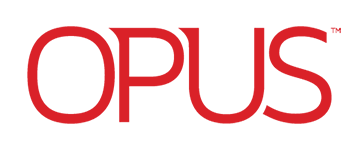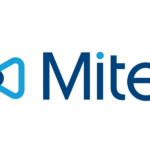How can businesses build and make the most of the modern workplace
Throughout history, the concept of an ideal workplace has constantly evolved, from the Action Offices of the ‘60s to the rise of office cubicles and the introduction of computers in the ‘90s, and the recent adoption of remote and hybrid working. Novel technologies underpinned many of these changes, and that is no different today with new technologies enabling businesses to change the way they work, leading to better outcomes for employers and employees alike.
What is the modern workplace?
There is no definitive definition of the modern workplace, however, there are common aspects that are shared between definitions by most businesses and thought leaders. Some of these include digital technologies, remote and hybrid work, data-driven processes and an emphasis on employee experience. People are at the forefront of the modern workplace, with digital technologies being a tool to support and enable people to succeed and create better business outcomes.
Benefits of the modern workplace
There are many benefits to the modern workplace, both for employees and employers.
Productivity: The modern workplace increases employee productivity in many ways. One way is through flexibility in work location, as it ensures that employees can work wherever they are more productive. Many technologies associated with the modern workplace are also designed specifically to increase productivity within the workforce
Job Satisfaction: As the modern workplace is centred around people, many of the changes and technologies are designed to improve the employee experience and make work easier. This, therefore, leads to higher job satisfaction and happier employees that create a healthy company culture.
Agility: The modern workplace makes use of the latest technologies and tools through a long-lasting journey of digital transformation. This process of adopting new technologies, as well as the features of the technologies, increases organisational agility and allows businesses to act and react quickly to changes.
Challenges of the modern workplace
Whilst there are many benefits associated with the modern workplace, the transformation process is not without its own set of challenges. A common roadblock that businesses run into is resistance from business leaders and employees. Any large-scale change must have buy-in from the top, therefore those in management roles must have a strong understanding of how the modern workplace can benefit the business. Similarly, for the modern workplace to be successful, employees should be involved in the process from the start.
How businesses can build a modern workplace
As with all projects, the first phase of building a modern workplace is research and planning. Businesses should first assess their current workplace, and what works well and what doesn’t. Many businesses are already using powerful technologies, but potentially not to their full extent. A perfect example of this is a Microsoft 365 subscription. This subscription includes many tools and features that can enable the modern workplace, but to get the most out of the technology, training needs to be created focusing on the technology.
Once a business has assessed its current workplace, it should then set clear goals that they aim to achieve. These goals may include an increase in productivity, improved employee engagement, better agility or stronger communication and collaboration. These goals will help define what changes need to be made within a business and what technologies can support these changes.
After this stage, businesses can create a strategy for the changes in processes and implementation of new technologies. The strategy should be a phased approach, ensuring that employees are kept in the loop at each stage. Depending on the IT experience within a business, some businesses will look to a trusted third-party IT provider for their expertise in the deployment of specific technologies.
Whenever changes are made within a workplace, it is essential that businesses monitor KPIs against the goals set and make adjustments to improve outcomes. This increases the likelihood of success whilst improving agility and adaptability.
Common technologies within the modern workplace
Communication and collaboration
The modern workplace requires a technology solution that enables employees to communicate and collaborate from anywhere, on any device. There are several solutions that are designed for this, including Slack, Google Workspace and Zoom. However, for most businesses, the ideal solution is Microsoft Teams. Teams is a unified communications platform that provides a single space for employees to meet, chat, call and collaborate. Microsoft constantly releases updates to make Teams more suitable for the modern workplace. Teams is also included in all Microsoft 365 subscriptions, making it a cost-effective solution
Hybrid meeting rooms
As the modern workplace is built with flexibility in mind, meetings often take place with virtual and in-person attendees. It can be difficult to ensure that all attendees have the same experience, which is why many modern businesses have opted for hybrid meeting rooms. These rooms include technologies such as facial tracking webcams, omnidirectional microphones, and digital whiteboards. Microsoft Teams also has features specifically designed to increase inclusivity within hybrid meetings.
Cloud migration
For businesses that have the on-premises infrastructure, it is possible to migrate these legacy workloads to the public cloud. This enables businesses to take advantage of the benefits of the cloud, such as cost savings, scalability, security increased flexibility, and the ability to access services from anywhere. Moving workloads to the cloud can vastly improve productivity and agility, however, it often requires the assistance of a trusted third-party IT provider.
Employee experience platforms
As the modern workplace focuses on improving the employee experience, it is logical to implement a technology platform dedicated to the employee experience. Microsoft’s answer to improving the employee experience is Viva, a platform designed to foster an organisational culture where people and teams are empowered to do their best from anywhere. Within Viva, there are four modules working together to aid the productivity, wellbeing, and education of employees.
How to get started
It is an exciting time for businesses as there are many opportunities to improve processes and implement technologies to make the most of the modern workplace. If businesses are successful, this can lead to increased profitability, more engaged employees and a more agile business. If your business is looking for an IT provider to help you make this move, contact us today and we will be happy to help.



